A collection of First World War fundraising badges
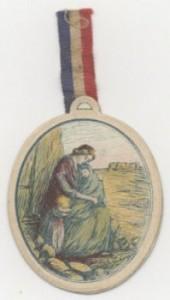
“.. give what you can, give a little of your happiness, a little of your well-being and a lot of your soul.”
These words are an English translation of a 1916 French poster for “Journée Nationale des Orphelins” (National Orphans’ Day).
Philanthropic organisations and patriotic groups moved swiftly to help alleviate the suffering caused by the First World War. A new vulnerable class of people had been created. There were former soldiers permanently incapacitated by injury, those who had tuberculosis, refugees and orphans. Although there was eventually some state aid, many people fell through the cracks of bureaucracy. In Europe, Australia and America, local fundraising as well as national campaigns were soon in full swing. Women’s voluntary organisations, made up mainly of women from the upper and middle classes, were essential in providing support for these activities.
National badge days were a common method of fundraising. The organisational logistics of holding such days must have been as enormous as they are today. Promotional posters and badges needed to be produced and volunteers required co-ordination.
During the First World War, Germaine Boglio (nee Roquebrune) was a schoolgirl living in Nice, France. Like other community-minded students, Germaine sold badges on fundraising days. A collection of her badges is now held by the Memorial.
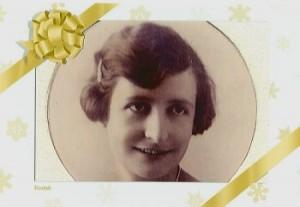
Thanks to the Boglio donation, the Memorial now holds both badge and poster for Journée Nationale des Tuberculeux (Anciens Militaires), 1917.
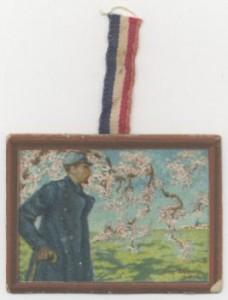
The standard of graphic detail shown in the badges is impressive. However small the badge, the image is clearly recognisable. Graphic production for fundraising badges would have drawn on European traditions of medal-making and engraving. In terms of technique, both traditions were capable of delivering extraordinary detail within a small area.
Fundraising imagery can be symbolic, which aligns it with medal-making, or can tell a story which is reminiscent of engraved illustrations. Here are examples of both.
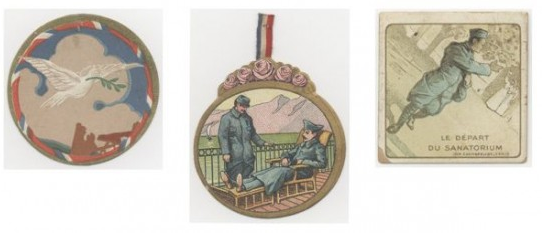
More symbolic imagery is shown in a series that commemorates the contribution of African soldiers and those from other French colonies. Of the eight million troops who fought for France in the First World War, almost half a million were colonial troops.
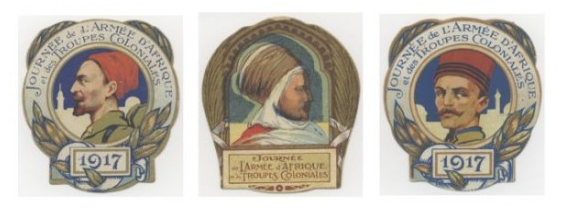
The Boglio collection is part of the Research Centre’s Souvenirs 5, Appeals and Fundraising Souvenir Collection.